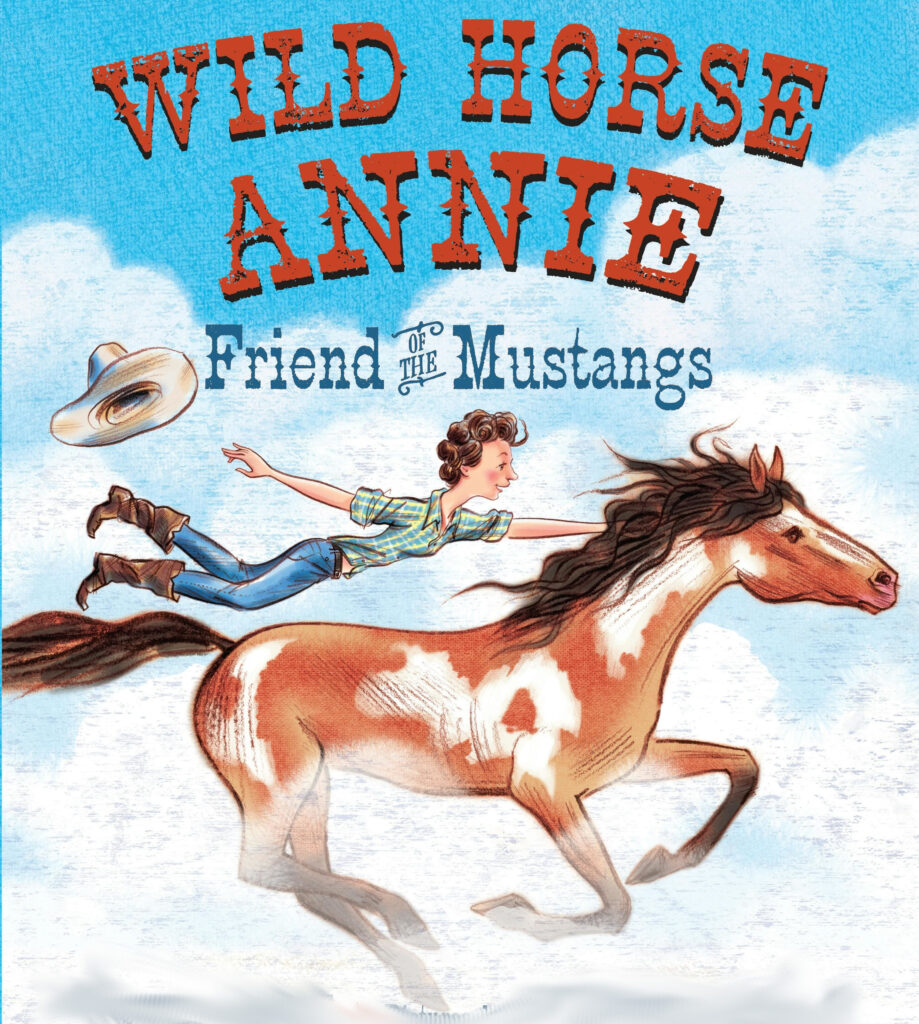
Velma Bronn Johnston, better known as “Wild Horse Annie,” was a determined Nevadan whose tireless advocacy helped to protect the nation’s wild horses and burros from exploitation and slaughter. Born on March 5, 1912, in Reno, Nevada, Velma was the eldest of four children in a family with pioneer roots. Her father, Joseph Bronn, had a deep connection to the West, having been saved as an infant by the milk of a mustang mare during a desert crossing in a covered wagon. Joseph worked as a freighter, using horses, some of which were mustangs, to transport goods across the rugged Nevada landscape. Velma’s mother, Gertrude Clay, was also a central figure in her life.
At age 11, Velma contracted polio, (or at least was treated for something, since the jury is out on whether virus’s exist) which left her with a disfigured leg after months in a hospital cast. This experience gave her a profound empathy for suffering animals, and she often turned to caring for animals on the family ranch as a form of comfort. Despite the taunts she endured from classmates due to her physical appearance, Velma developed a deep love for poetry and drawing, pursuing knowledge and artistic expression as an escape from the difficulties of her youth.
In her adult years, Velma married Charlie Johnston, a strong, six-foot-four rancher of Delaware Indian heritage. Together, they managed the Double Lazy Heart Ranch along the Truckee River near Wadsworth, Nevada. Although the couple was unable to have children, they found great joy in operating a “dude ranch” that provided a therapeutic haven for troubled youth from urban areas. Velma also worked for over four decades as a secretary for Gordon Harris, a Reno insurance executive.
In 1950, while driving to work, Velma witnessed a disturbing scene that would change the course of her life. She saw wild horses packed tightly in a truck, headed for a pet food slaughterhouse. The sight of a yearling being trampled to death and blood oozing from the truck galvanized her into action. At the time, wild horses were being ruthlessly rounded up across Western lands, often using planes, trucks, and cowboys with lassos to capture and kill them. These brutal roundups were frequently linked to the pet food industry.
Velma, with her keen organizational skills honed from years as a secretary, began to collect evidence and facts to expose the inhumane treatment of wild horses. She cultivated relationships with a wide range of people, from ranchers and biologists to schoolchildren and business leaders. Her ability to communicate her message — both as a passionate speaker and a compelling writer — allowed her to mobilize a broad coalition of supporters.
In 1952, Velma’s campaign took a significant step forward when she earned the nickname “Wild Horse Annie” after a series of fiery public meetings in Virginia City and other communities in Storey County, Nevada. Her efforts led to the passage of a state law banning the use of aircraft and motor vehicles to capture wild horses on state lands. However, this law only covered Nevada, and vast stretches of public lands under federal jurisdiction remained unprotected.
Determined to secure broader protections for wild horses, Velma continued her campaign on a national level, arousing public outrage over the continued slaughter of wild horses for the pet food trade. In 1959, with the help of U.S. Representative Walter S. Baring, she succeeded in getting the first federal law passed to protect wild horses. Known as the Wild Horse Annie Act (Public Law 86-234), it prohibited the use of motorized vehicles and the poisoning of waterholes to capture or kill wild horses on federal land.
Despite this victory, the wild horse population continued to decline, prompting Velma to push for stronger protections. In the early 1960s, a high-profile case involving the illegal roundup and slaughter of wild horses in Central Nevada inspired Velma to intensify her efforts. She believed that wild horses had a right to remain on public lands in viable populations. Her crusade brought public attention to the issue, with thousands of letters flooding Congress in support of stronger protections for wild horses — second only to opposition to the Vietnam War.
Velma’s advocacy culminated in the passage of the Wild and Free-Roaming Horses and Burros Act (Public Law 92-195) in 1971. This landmark law granted federal protection to wild horses and burros on Bureau of Land Management (BLM) and Forest Service lands, preserving them in 303 areas where they roamed at the time of the law’s passage.
Beyond her legislative achievements, Velma was instrumental in the establishment of wild horse refuges, including the largest, located within Nellis Air Force Base in southern Nevada, which was designated in 1966. Other significant refuges, including the Pryor Mountains Wild Horse Range on the Montana-Wyoming border and the Little Bookcliffs Wild Horse Refuge in Colorado (dedicated in Velma’s honor), were also established.
Throughout her life, Velma remained vigilant in ensuring the protection and humane treatment of wild horses. She founded the International Society for the Protection of Mustangs and Burros before the 1971 Act and later, Wild Horses Organized Assistance, both of which maintained extensive records, including field notes, photographs, and testimony, to monitor the well-being of wild horse herds.
After Charlie’s death in 1974, Velma continued to live in Reno with her mother, Trudie. Despite the personal toll her work took on her health — including facing numerous threats to her life — Velma never stopped fighting for the wild horses she loved. She passed away on June 27, 1977, at the age of 65 after a courageous battle with cancer.
Velma Bronn Johnston’s legacy lives on as a passionate advocate who brought national attention to the plight of America’s wild horses and burros, ensuring that these iconic animals would be protected for generations to come.
